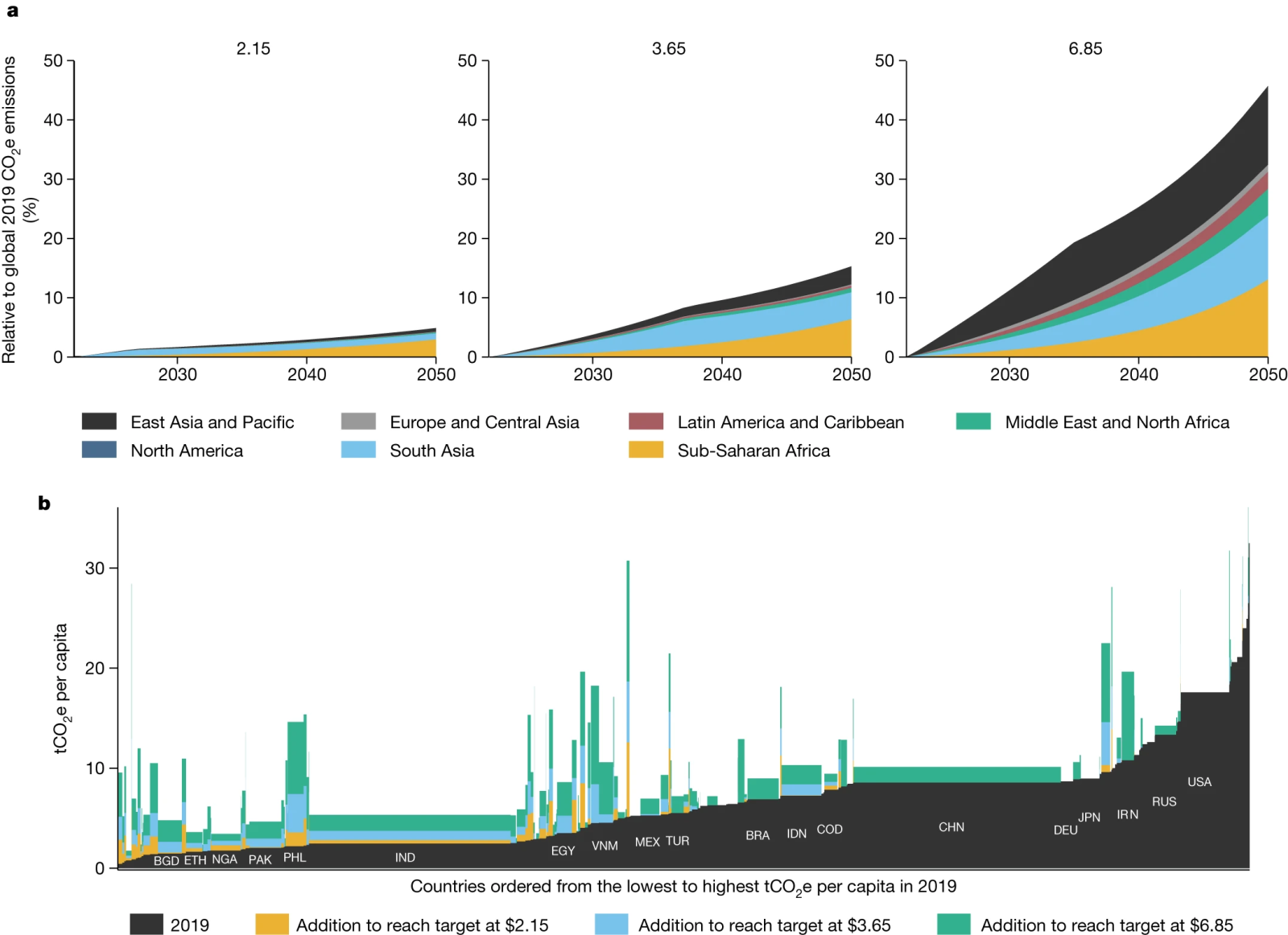November 29, 2023 | Nature |
Introduction: While eradicating poverty has historically led to modest increases in global emissions, World Bank researchers re-examine the historical relationships between consumption, economic growth, and energy/carbon intensity to determine if poverty alleviation and climate change mitigation are compatable goals. The research estimates the economic growth needed to reduce extreme poverty to 3% globally, considering different poverty lines.
Key findings: To achieve economic growth needed to reduce extreme poverty to 3% globally, the estimated increase in carbon emissions would vary based on the poverty line. Alleviating extreme poverty, even at middle-income standards, can be prioritized without significantly affecting climate objectives. While there may be some trade-offs in specific policies, there are more synergies than conflicts between poverty alleviation and climate objectives, especially with advancements in renewable energy and efficiency measures.
The World Bank research highlights the need for policies that reduce energy intensities, carbon intensities to address the challenges of poverty and climate change simultaneously.

Fig. | Emissions of poverty alleviation. a, Annual CO2e increase of poverty reduction at three poverty lines (percentage of 2019 global emissions) by region, b, Emissions of poverty alleviation in 2050 by country. The bar width of each country is scaled to their population in 2019. The yellow areas show the CO2e needed to end extreme poverty in 2050, expressed relative to the emissions of the country in 2019. The sum of the blue and yellow areas shows the CO2e needed to reach the target poverty rate of 3% at $3.65, and equivalently for $6.85. tCO2e, tonne carbon dioxide equivalent. BGD, Bangladesh; ETH, Ethiopia; NGA, Nigeria; PAK, Pakistan; PHL, Philippines; IND, India; EGY, Egypt; VNM, Vietnam; MEX, Mexico; TUR, Turkey; BRA, Brazil; IDN, Indonesia; COD, Democratic Republic of the Congo; CHN, China; DEU, Germany; JPN, Japan; IRN, Iran; RUS, Russia; USA, United States of America.





